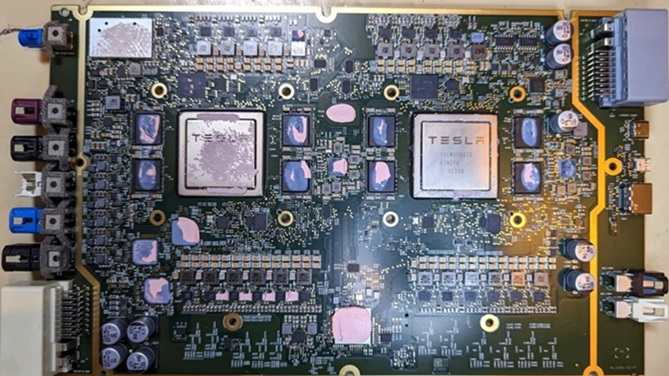Tesla Full Self-Driving (FSD) package has been a hot topic in the automotive world for years. Billed as a groundbreaking step toward unsupervised self-driving, it has captured the imagination of EV enthusiasts and tech lovers alike. But for many Tesla owners, the dream of full autonomy has turned into a frustrating waiting game.
Now, Tesla is under fire for its refusal to allow FSD package transfers—a decision that many see as unfair, especially given the company’s struggles to deliver on its promises. Let’s dive into the issue and explore what it means for Tesla owners and the future of FSD.

The FSD Promise: A Long Road of Delays
Tesla began selling the Full Self-Driving package in 2016, promising that cars equipped with this software would eventually achieve unsupervised self-driving capability through over-the-air updates. However, the journey hasn’t been smooth.
Initially, Tesla claimed that all cars produced after 2016 would be capable of self-driving. But by 2019, it became clear that the original hardware couldn’t handle the job. Tesla introduced the HW3 computer and offered retrofits for older cars.
In 2023, Tesla unveiled a newer HW4 computer, touting improved performance. Yet, despite earlier assurances, Tesla shifted its focus to HW4, leaving HW3 cars behind. Many owners now face the reality that their vehicles may never achieve the promised self-driving capabilities.
This shifting narrative has left FSD customers feeling frustrated, especially those who invested up to $15,000 for a feature Tesla has yet to deliver fully.
Why Tesla’s Stance on FSD Transfers Feels Unfair
The core of the controversy lies in Tesla’s refusal to allow FSD package transfers. In simple terms, if you upgrade to a new Tesla, you cannot transfer the FSD package you’ve already purchased. Instead, you’re expected to pay for it again—a steep price for a feature that remains unfinished.
From a customer’s perspective, this policy feels unfair for several reasons:
- Unmet Promises: Tesla sold FSD as a future-ready feature but has not delivered on its full potential for many vehicles.
- Cost Implications: Requiring customers to repurchase the FSD package adds a significant financial burden, especially since the product is still incomplete.
- Software Flexibility: Transferring software to new hardware costs Tesla nothing, as the FSD software is already standard across all new Teslas.
Many owners argue that allowing FSD transfers would be a goodwill gesture, acknowledging Tesla’s delays while encouraging customer loyalty.
A Missed Opportunity for Customer Trust
In 2023, Elon Musk briefly opened a “one-time amnesty” window for FSD transfers, but it wasn’t driven by a desire to do the right thing. Instead, Tesla used the offer as a sales tactic to boost quarterly numbers.
The so-called “one-time” offer was brought back four more times when Tesla needed to drive orders, showing it was more about marketing than customer satisfaction. Musk’s inconsistent approach has left many owners skeptical of Tesla’s intentions.
Currently, Tesla has closed the transfer window, citing strong demand for its vehicles as a reason not to offer FSD transfers. Factors like new Model Y launches, tax credit concerns, and upcoming price hikes are driving sales, making Tesla less reliant on incentives.
The Bigger Problem: Hardware Limitations
A significant challenge for Tesla is the hardware itself. The HW3 computer, introduced in 2019, is already reaching its limits. Tesla’s FSD technology now requires both processing nodes on the HW3 system, eliminating the redundancy needed for higher levels of autonomy (Levels 4-5).
Despite earlier promises of retrofits, there’s no sign of a plan to upgrade HW3 cars to HW4. This has left many owners stuck with vehicles that may never achieve the full potential of the FSD package they paid for.
Tesla’s history of hardware upgrades, from HW2.5 to HW3 and now HW4, highlights a broader issue: the company’s inability to anticipate the technological demands of full autonomy. This ongoing cycle creates uncertainty for owners and undermines trust in Tesla’s promises.
What Tesla Should Do
Allowing FSD package transfers seems like a simple and fair solution. Here’s why:
- Customer Loyalty: Transferring FSD to new vehicles would build goodwill and show that Tesla values its customers.
- Liability Reduction: Moving FSD from outdated HW3 vehicles to newer models would reduce Tesla’s liability, as newer hardware has a better chance of meeting self-driving goals.
- Future-Proofing: By focusing on delivering FSD on the latest hardware, Tesla could streamline its development efforts and improve outcomes.
Unfortunately, Tesla appears unwilling to take this step. Instead, it continues to use FSD as a “demand trigger,” leveraging its unfinished product to encourage new purchases.
Innovation vs. Expectations
Tesla’s FSD journey is a story of ambition and innovation, but it’s also a cautionary tale about overpromising and underdelivering. While the technology itself is impressive, the company’s marketing and customer policies have left many feeling let down.
The refusal to allow FSD transfers is emblematic of a larger issue: Tesla’s prioritization of sales over customer satisfaction. By addressing this, Tesla could not only regain trust but also set a new standard for how automakers handle evolving technologies.
Tesla’s refusal to allow Full Self-Driving package transfers is a missed opportunity to do right by its customers. Instead of addressing its delays and hardware challenges, Tesla has chosen to double down on sales tactics that leave owners feeling shortchanged.
While FSD remains an exciting product with immense potential, Tesla’s handling of the situation has overshadowed its achievements. To truly lead the industry, Tesla must balance its innovative spirit with a commitment to fairness and transparency. Only then can it deliver on the promise of a fully autonomous future.
Related Post
